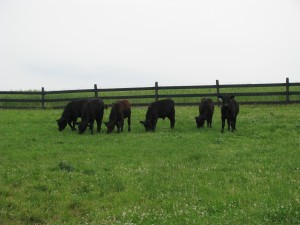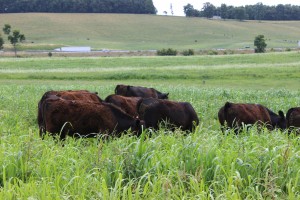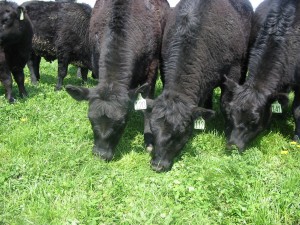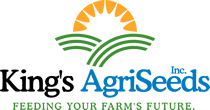By Josh Baker

In the transition zone, the hot, dry summer months are a critical time to ensure that appropriate perennial pasture management is utilized. Although it seems to happen too fast, in a short while many areas will begin to leave spring behind and move into summer. As air and soil temperatures increase, and rainfall becomes sparse, our cool season perennials recover from grazing much more slowly. The severity of the summer as well as the degree of rainfall will determine how quickly the stands recover. While the summer may be cool and moist (not likely), we should still approach the summer season prepared for slower pasture regrowth and possible summer dormancy.
 Do Not Overgraze. No matter how slow the regrowth, a key to maintaining a productive stand is not to overgraze. This means respecting a residual height of 4 inches and not re-grazing until a height of at least 8-10 inches is reached. Pastures that maintain at least 4 inches of residual height have cooler soil temperatures and higher moisture holding capacity. This means that they will recover faster and make better use of limited summer rainfalls, leading to quicker regrowth than a pasture that is overgrazed. ‘Grass grows grass’ is a phrase we hear referring to this concept. The more your pasture resembles a golf course, the higher the likelihood that you will maintain lower levels of per acre productivity.
Do Not Overgraze. No matter how slow the regrowth, a key to maintaining a productive stand is not to overgraze. This means respecting a residual height of 4 inches and not re-grazing until a height of at least 8-10 inches is reached. Pastures that maintain at least 4 inches of residual height have cooler soil temperatures and higher moisture holding capacity. This means that they will recover faster and make better use of limited summer rainfalls, leading to quicker regrowth than a pasture that is overgrazed. ‘Grass grows grass’ is a phrase we hear referring to this concept. The more your pasture resembles a golf course, the higher the likelihood that you will maintain lower levels of per acre productivity.
Develop a Sacrifice Area. If acreage is limited and a summer stockpile of perennial grasses is not available, develop a sacrifice area in which to feed stored forage. Feeding stored forage and allowing the grass to regrow to the appropriate grazing height (8-10 inches) will foster a much more productive stand this year and beyond. A more productive stand means a longer grazing season and decreased utilization of stored forage. It is critical to move animals off of the pastures while feeding stored forage. If left on pastures, animals will continue to overgraze despite deriving their nutritional needs from the stored forage being fed. In addition, animals grazing short forage exert more energy to reach their goal intake (2.5-3% on a dry matter basis of their body weight), thus reducing body condition or requiring higher intake. It’s a vicious cycle that leads to lower productivity.


Grow a Summer Annual Forage. Producing a summer annual forage is the best way to ensure that the quality of the forage intake is high enough to maintain high producing livestock. Whether you’re growing stockers, spring calving heifers or even maintaining mature cows, the transition from lush perennial forage to stored forage in the summer can be difficult, depending on the quality of the stored forage. In addition, as stated earlier, continuing to graze your perennial stand at a time when the plants are already stressed by weather conditions decreases its overall productivity. Growing a high quality summer forage is a great way to ensure that cattle continue to gain/produce without a transition slump, and to preserve high production in your perennial pastures. In addition, if enough acreage is designated for summer production, it can also be a great way to conserve perennial forages for winter stockpiling. With a seed cost of ~$50-60/acre and a production potential of 3-5 tons of DM/acre (Dry hay is 11% moisture), growing summer forages can be a very lucrative venture; especially in the moisture-stressed climate of the transition zone .
The overall message is to balance per acre productivity with cow numbers. Increasing your year-round productivity by maximizing growth each season may not mean you avoid feeding stored forage, but that you reduce your need for it, thus increasing the profit potential of the acres you manage.
Speak to an expert at King’s AgriSeeds now at 1-717-687-6224 or email us at [email protected].
